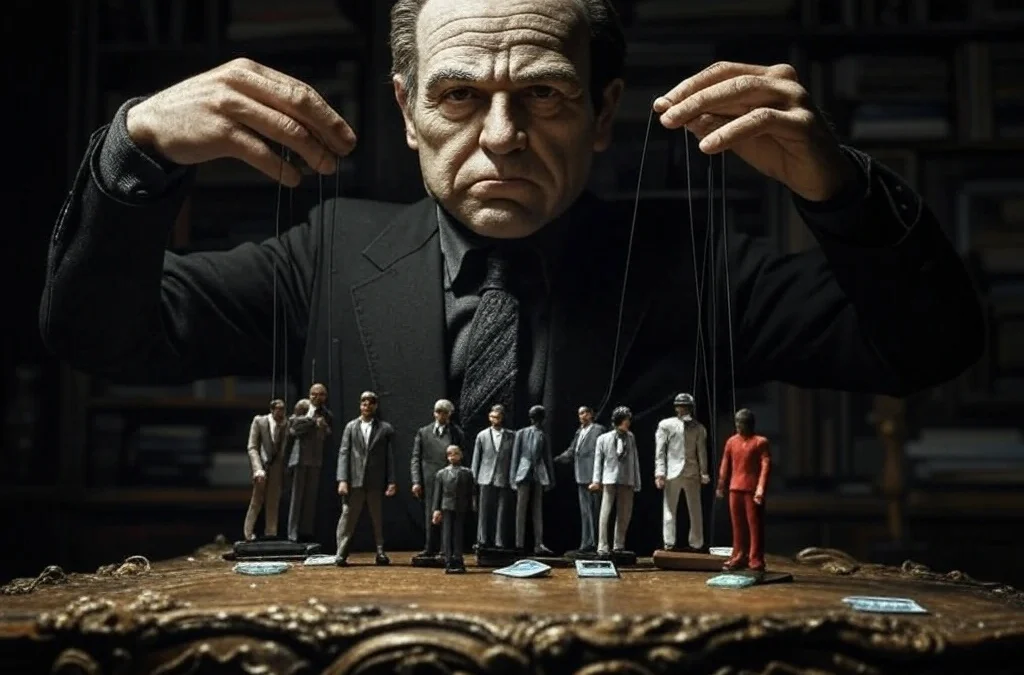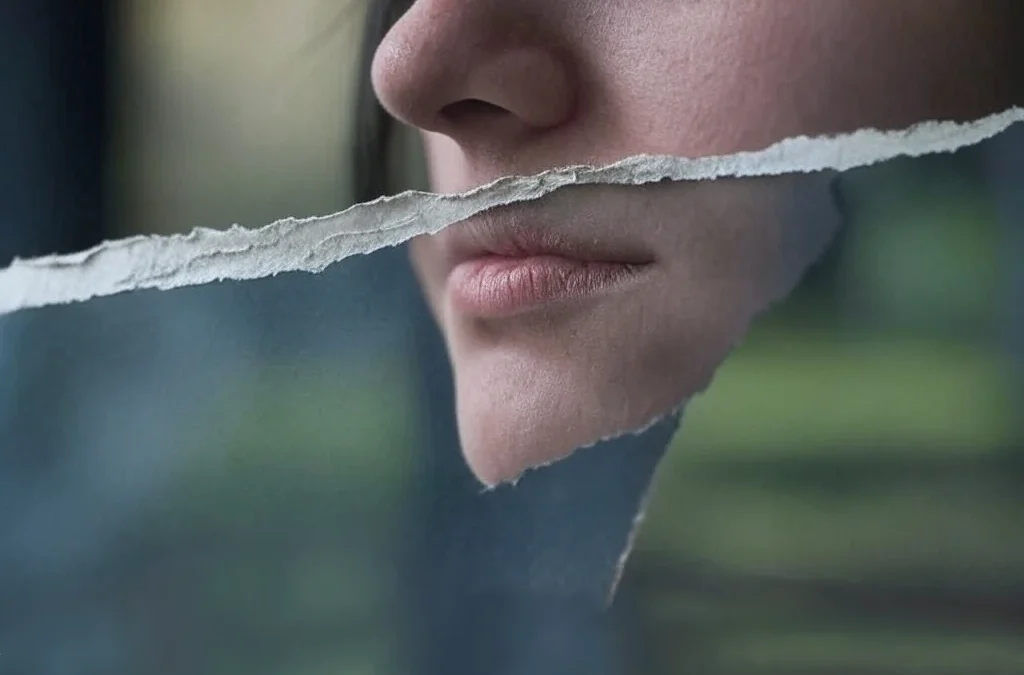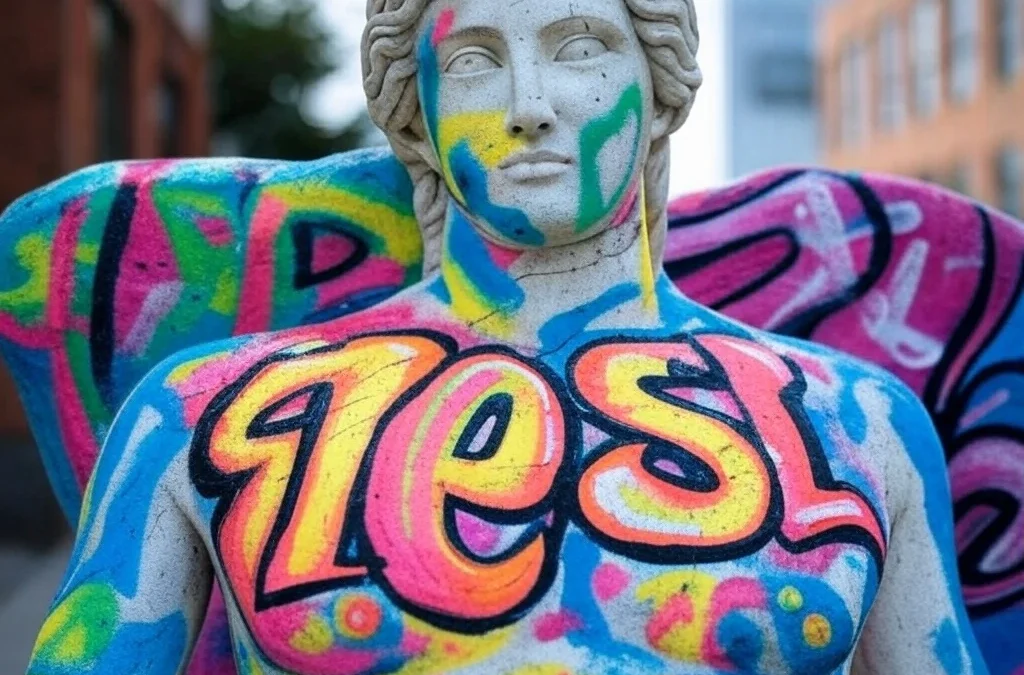Imagine scrolling through your social media feed and coming across a photo of a stunning beach. The sand is golden, the water is crystal clear, and the sunset is breathtaking. You might feel a pang of wanderlust, wanting to visit this paradise. But what if the photo is just a clever edit, a combination of different images crafted to look perfect? This is an example of a simulacrum, where reality is imitated or even replaced by something that looks real but isn’t. In our everyday lives, we encounter many such instances, often without even realizing it.
Simulacra are all around us, from the ads we see to the stories we hear. They can be as simple as a replica of a famous painting or as complex as a virtual reality game that mimics real-world experiences. These examples blur the lines between what is real and what is not, often leaving us questioning the authenticity of what we perceive. Understanding simulacra can change the way we view the world, helping us see beyond the surface. In this article, we’ll explore 20 fascinating examples of simulacrum that highlight how imitation and reality intertwine in surprising ways.
Understanding Simulacrum
Simulacrum is a term that originates from the Latin word “simulare,” meaning “to resemble” or “to simulate.” In contemporary usage, a simulacrum refers to an image or representation of someone or something. However, its significance extends far beyond mere imitation, encompassing a broad spectrum of interpretations across various fields such as philosophy, art, and media studies.
In philosophical terms, particularly in the work of French philosopher Jean Baudrillard, a simulacrum is an entity that replaces reality with its representation. Baudrillard argues that in a world saturated with media and symbolic exchanges, the line between reality and representation becomes blurred. Simulacra become hyperreal, meaning they are more real than the reality they represent, creating a world where the distinction between true and false, real and imagined, becomes indistinguishable.
In art and literature, simulacra can be seen as copies or imitations that challenge the authenticity and originality of the original work. Artists and writers use simulacra to explore themes of identity, reality, and perception, often questioning the value of the original versus the copy.
In the digital age, simulacrum has taken on new meaning with the advent of virtual reality, augmented reality, and digital media. These technologies create immersive experiences that are representations of reality, yet they can evoke genuine emotions and experiences in users, further complicating the relationship between reality and its representations.
The concept of simulacrum invites us to question the nature of reality and the role of representations in shaping our understanding of the world. It challenges us to consider how images, symbols, and media influence our perceptions and beliefs, often leading us to accept representations as reality itself.
In summary, a simulacrum is more than just a copy or imitation; it is a complex and multifaceted concept that explores the interplay between reality and representation. Whether in philosophy, art, or digital media, simulacra invite us to reflect on the authenticity and meaning of our experiences in a world increasingly dominated by images and representations.
The Best Examples of Simulacrum
Simulacra are everywhere, often blending seamlessly into our daily lives. From curated social media profiles to lifelike virtual worlds, these examples highlight how reality can be imitated—or even replaced—by convincing representations. Below, we’ll explore 20 fascinating examples of simulacrum that show how the lines between the real and the artificial often blur.
1. Hyper-Realistic Theme Parks
Theme parks like Disneyland are perfect examples of simulacra. They create an environment that mimics various fantasy worlds, making them feel real. Visitors experience these fictional settings as though they are part of them, blurring the lines between reality and imagination.
2. Virtual Reality Gaming
Virtual reality games transport players to digital worlds that often feel more vivid than real life. These environments are constructed to replicate experiences so convincingly that users might momentarily forget they are in a game. The simulated environments can evoke genuine emotional responses, highlighting the essence of simulacrum.
3. Social Media Personas
Many individuals curate their lives on social media, presenting an idealized version of themselves. This digital persona often differs significantly from reality, creating a simulacrum. Followers might perceive this crafted identity as genuine, even though it might only represent a fragment of the person’s actual life.
4. Historical Reenactments
When people participate in historical reenactments, they step into a meticulously crafted version of the past. These events aim to replicate historical moments with great accuracy. Participants and spectators can experience history as if it were happening in the present, although it is merely a constructed representation.
5. Architectural Replicas
Cities like Las Vegas feature architectural replicas of famous landmarks, such as the Eiffel Tower or the Venetian canals. These structures are not the originals but are designed to give visitors the experience of being in a different place without leaving the city. The replicas serve as a simulacrum, providing an illusion of authenticity.
6. Film Sets
In filmmaking, sets are constructed to mimic real locations or entirely fictional worlds. They are crafted to look authentic on screen, allowing viewers to believe in the story being told. The sets are temporary and often exaggerated, yet they create a convincing simulacrum that enhances the narrative.
7. Artificial Intelligence in Art
AI-generated art is another example of simulacrum. These artworks are created by algorithms that mimic human creativity, producing pieces that can be indistinguishable from those made by humans. The art is real, yet it is generated by non-human processes, challenging the perception of authenticity.
8. Reality Television
Reality TV shows are designed to portray real-life situations, though they are often scripted or edited to enhance drama. The result is a version of reality that viewers perceive as genuine, even though it may not fully reflect true events. This blend of reality and fiction creates a simulacrum that captivates audiences.
9. Online Avatars
In online games and social platforms, users create avatars to represent themselves. These digital characters can look and act in ways that differ from their creators, offering a new identity in the virtual world. The avatars serve as simulacra, embodying the user’s presence in a simulated environment.
10. Deepfake Technology
Deepfake technology uses AI to create realistic fake videos of people. These videos can make it appear as though someone is saying or doing something they never did. The technology blurs the line between reality and fabrication, producing a simulacrum that can be both convincing and misleading.
11. Artificial Landscapes in Shopping Malls
Modern shopping malls often feature artificial landscapes, such as indoor waterfalls, gardens, and even small rivers. These elements mimic the natural world, creating an illusion of being outdoors while indoors. Shoppers can enjoy the beauty of nature without leaving the urban environment, blending the line between natural and artificial.
12. Holographic Concerts
With advancements in holographic technology, concerts featuring deceased artists have become possible. These performances use holograms to recreate the presence of artists on stage, offering fans the experience of a live concert. The audience is presented with a simulacrum that feels immediate and real, despite the absence of the actual performer.
13. Cosmetic Surgery
Cosmetic surgery allows individuals to alter their physical appearance, often to resemble an ideal or celebrity. The resulting appearance can be a simulacrum of youth or beauty that defies natural aging. This transformation creates a new identity that may not align with the person’s original self but is accepted as real.
14. Digital Influencers
Some social media influencers are not real people but digital creations. These virtual influencers interact with followers and endorse products just like human influencers. Despite being computer-generated, they have a significant impact on consumer behavior, representing a simulacrum of human influence in the digital space.
15. Replica Food in Display Cases
Restaurants, particularly in Japan, often use plastic replicas of food to display their menu offerings. These realistic models look identical to actual dishes, enticing customers with their visual appeal. The replicas serve as a simulacrum, providing a preview of the dining experience without the taste or aroma.
16. Augmented Reality Advertisements
Augmented reality (AR) ads overlay digital content onto the real world, creating an interactive experience. These advertisements can make products appear in the viewer’s environment, blending the line between digital and physical. This technology offers a simulacrum that enhances engagement by merging virtual elements with reality.
17. Theme Restaurants
Restaurants designed around specific themes, like medieval times or outer space, offer diners an experience beyond just food. The decor, staff attire, and even menu items are crafted to fit the theme, creating an immersive environment. These establishments provide a simulacrum that transports patrons to a different era or world.
18. Digital Twins in Urban Planning
Cities are increasingly using digital twin technology to create virtual replicas of urban environments. These digital models simulate real-world conditions and allow planners to test scenarios before implementing changes. The digital twin acts as a simulacrum, providing insights and predictions based on a synthetic version of the city.
19. Artificial Scent Technology
Scent technology can replicate various aromas, from fresh-cut grass to ocean breezes, without the source. These artificially created scents can evoke memories or emotions, much like their natural counterparts. The technology offers a simulacrum of sensory experiences, providing the illusion of presence through smell.
20. Interactive Museum Exhibits
Modern museums use interactive exhibits to recreate historical events or environments. Visitors can engage with these exhibits through touchscreens, VR, or AR, experiencing history in a dynamic way. The exhibits create a simulacrum that educates and entertains, making the past accessible and engaging through technology.
The Philosophy of Simulacrum Explained
Simulacrum might sound like a complicated term, but it’s not as hard to understand as it seems. At its core, a simulacrum is a copy or representation of something that may or may not have a real-world counterpart. Over time, these representations can take on a life of their own, becoming “more real” than the original. This idea has fascinated philosophers, especially Jean Baudrillard, who explored how modern society blurs the line between reality and imitation.
What Is Hyperreality?
Hyperreality is a term Baudrillard used to describe a world where the difference between what’s real and what’s not becomes unclear. It happens when a representation – like an image, a story, or an experience – starts feeling more authentic than the thing it’s supposed to represent. Think of social media. A person might share filtered photos of their vacation, making it seem perfect. For those viewing it, this “ideal trip” becomes more real than the actual trip, which might have included delayed flights or bad weather.
Hyperreality is all around us. Ads don’t just sell products; they sell dreams. Fast food commercials show burgers that look flawless, though the actual meal rarely matches the image. These representations can influence how we think and what we desire, even if they’re far removed from reality.
Do Simulacra Add Value or Create Confusion?
Philosophers disagree about whether simulacra enrich our lives or make them more confusing. On one hand, simulacra can be entertaining and inspiring. A movie set in a fictional world, for example, can feel so believable that it transports us for a moment. Similarly, well-designed replicas – like a historic reenactment or an artist’s interpretation of a famous painting – can bring history and culture closer to people who might not experience it otherwise.
On the other hand, simulacra can distort our perceptions. They can create unrealistic expectations or replace genuine experiences with artificial ones. For example, reality TV often claims to show “real life,” but it’s heavily edited and staged. Viewers might take these shows at face value, forming opinions based on a skewed version of reality.
Why Does This Matter?
Understanding simulacra isn’t just about philosophy. It helps us think critically about the world we live in. When we recognize that many things we see – whether on screens, in advertising, or in everyday life – are constructed or exaggerated, we can make more informed choices. Instead of blindly trusting a representation, we can pause and ask, “Is this the whole truth?”
Simulacra also challenge us to think about what’s truly valuable. Is the original always better than the copy? Or can copies have meaning in their own right? For instance, a digital reproduction of a famous painting might lack the texture and detail of the original, but it allows millions to experience the artwork. In cases like this, the simulacrum becomes a tool for access rather than deception.
A Part of Everyday Life
You don’t need a philosophy degree to see how simulacra shape our daily experiences. From the curated photos on Instagram to the glossy food photos on a menu, they’re everywhere. Recognizing them can help us enjoy the creativity they bring while staying grounded in what’s real.
Simulacra may blur the lines between reality and representation, but they also remind us of something important. The way we perceive the world is often shaped by how it’s presented to us. Learning to question those presentations can lead to a richer understanding of both the real and the imagined.
Understanding Hyperreality in Everyday Life
In our daily routines, we often encounter situations where the line between reality and representation blurs. This is where the concept of hyperreality comes into play. Hyperreality refers to a condition where what is real and what is fiction are seamlessly blended together so that there is no clear distinction between where one ends and the other begins. This is not just limited to grand concepts or philosophical discussions. It’s right there in our everyday experiences.
Consider the world of advertising. When you see a commercial for a new smartphone, you’re not just being shown a product. You’re being presented with an idealized version of life with that product. The sleek design, the perfect lighting, and the happy, carefree users create a reality that seems almost too perfect. This is hyperreality – a crafted version of life that blurs the boundaries between the real product and the lifestyle it promises.
Social media platforms are another prime example. The photos and stories we see often depict idealized versions of people’s lives. Filters and editing tools allow users to enhance their images, creating a version of reality that can be more appealing than the truth. This hyperreal content can affect how we perceive our own lives and the lives of others, often leading to comparisons with these curated realities.
Theme parks like Disneyland also illustrate hyperreality. They create environments where imagination and reality blend seamlessly. Visitors enter a world meticulously designed to mimic and enhance reality, offering experiences that feel real yet are entirely fabricated.
Understanding hyperreality helps us become more aware of how media and technology shape our perceptions. It encourages us to question what we see and consider the underlying realities. By recognizing these hyperreal elements in our lives, we can better navigate the complex mix of reality and fiction that surrounds us.
Understanding Simulacrum in Philosophy and Media Theory
The concept of “simulacrum” is deeply rooted in philosophy and media theory, providing a lens through which to understand representations and reality. French philosopher Jean Baudrillard is most famously associated with the term, which he explored extensively in his works. In his theory, a simulacrum is not merely a copy of the real but becomes its own reality, or “hyperreality.” Baudrillard argued that in a world saturated with media images and symbols, the distinction between the real and the simulated becomes blurred.
In media theory, simulacra are used to describe how media and technology create environments where simulations are perceived as more real than reality itself. This concept is crucial for understanding how modern media shapes our perception of the world. People often engage with media representations without questioning their authenticity, leading to a society where images and symbols are accepted as truth. Understanding simulacrum in this context allows us to critically evaluate the impact of media on our perceptions and beliefs, making it a vital topic in contemporary discussions around media literacy and critical thinking.
The Role of Simulacrum in Art and Popular Culture
In art and popular culture, the idea of simulacrum plays a significant role in shaping creative expression and consumer experiences. Artists often use simulacra to challenge perceptions of reality, creating works that question authenticity and originality. This can be seen in movements like Pop Art, where artists like Andy Warhol replicated images of consumer goods and celebrities to critique mass production and consumer culture.
In popular culture, simulacra are prevalent in films, video games, and virtual reality experiences, where fictional worlds often feel more immersive than reality. Movies like “The Matrix” and “Inception” explore themes of simulated realities, prompting audiences to question the nature of their own experiences. The use of simulacra in these contexts reflects society’s fascination with the boundaries between real and artificial, and how technology blurs these lines.
As technology advances, the prevalence of simulacra in culture continues to grow, influencing how people interact with and interpret the world around them. Understanding the role of simulacrum in art and culture is essential for appreciating how these creations shape societal norms and individual identities.
Simulacrum in Digital Art and Culture
Digital art has embraced the concept of simulacrum in many fascinating ways. Artists often use digital tools to create works that challenge our perception of reality. These pieces blur the line between the real and the artificial, questioning what we accept as genuine. Digital culture thrives on this ambiguity. Virtual worlds and video games offer environments where simulacra are the norm. Players interact with these worlds as if they were real, despite knowing they’re not. This creates a unique tension. The experience feels authentic, yet it is entirely constructed. Some say this mirrors our interactions on social media. We engage with profiles that may not reflect true identities. But does it matter? The connections feel real. This raises questions about authenticity in art and life. As digital art continues to evolve, the role of simulacra will likely expand. It’s an exciting, yet occasionally bewildering, field to explore.
Simulacrum and Its Impact on Perception of Reality
The concept of simulacrum deeply influences how we perceive reality. In a world filled with images and representations, distinguishing between what’s real and what is a copy becomes tricky. Media plays a significant role here. It often presents a version of reality that isn’t entirely accurate. This affects our understanding and expectations. For instance, advertising uses simulacra to sell ideals. These images create desires for lifestyles that may not exist. People chase these ideals, sometimes at the cost of their happiness. This disconnect can lead to frustration. In some cases, it can even alter societal norms. People begin to value the representation more than the reality itself. This shift has profound implications. It changes how we interact with the world around us. Some argue it makes us more disconnected, while others see it as a new way of experiencing life. Despite differing views, the impact of simulacra on our perception of reality is undeniable. It’s a topic worth pondering, even if it occasionally makes your head spin.
Read also: 30 Unknowns That Will Blow Your Mind
The Most Popular on BitGlint

30 Defiance Examples & Meaning
Defiance is something most people experience at some point in life. You feel it when you say no to something that...

30 Cynicism Examples in Everyday Life & Definition
Cynicism is something most people have seen, heard, or even felt - but few stop to really think about what it means....

30 Ethical Dilemma Examples & Definition
Ethical dilemmas are not just topics for classrooms or philosophers. They happen to regular people every day - in...

100 Social Interaction Examples
In our increasingly digital world, the art of face-to-face social interaction remains essential for personal growth,...

100 Open-Ended Questions: Examples & Meaning
Open-ended questions are questions that invite explanation, opinion, or personal stories. Unlike yes-or-no questions,...

30 Regret Examples & What It Means
Regret is a common human emotion that almost everyone experiences at some point in their lives. It shapes our...

30 Transgression Examples & Definition
We all know what it feels like when someone “crosses the line.” Maybe they say something they shouldn't. Maybe they...
Get Inspired with BitGlint
The Latest
Hermaphroditus (Greek Mythology)
In Greek mythology, Hermaphroditus was born as the son of Hermes, the messenger god, and Aphrodite, the goddess of love and beauty. His name combines those of his parents—Hermes and Aphrodite. As the child of two Olympian deities, Hermaphroditus was extraordinarily...

30 Obedience Examples & What It Really Means
Obedience is a part of everyday life, whether we notice it or not. From following traffic laws to listening to a parent or teacher, we all experience it in one way or another. But what does obedience really mean? Why do people obey — and when should they? In this...
50 Things That Are Smart
We all know someone who seems naturally clever. Maybe they pick up new skills quickly or always have the right answer. Being smart isn't just about book smarts or having a high IQ. It shows up in many forms - from problem-solving and adapting to new situations to...
100 Myth Examples: Famous Myths Around the World
Myths have been a part of human culture for thousands of years. They are stories passed down through generations, often explaining the mysteries of life, nature, or human behavior. Every culture has its own myths, shaping the way people see the world and influencing...

